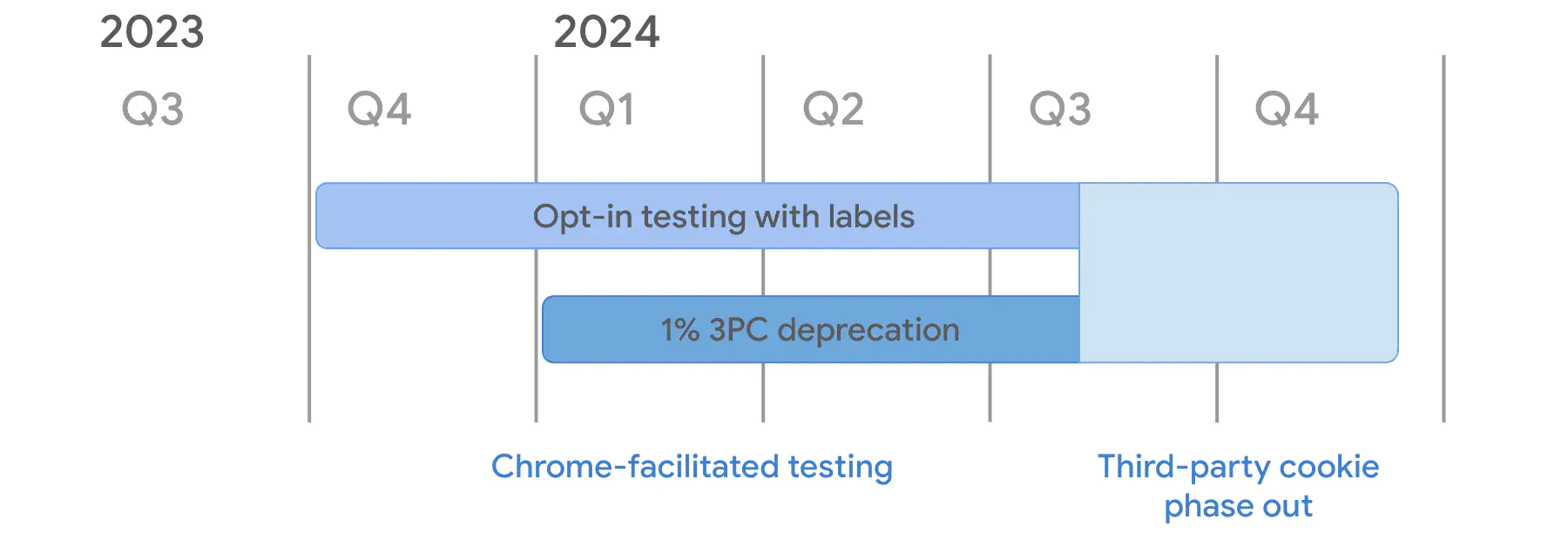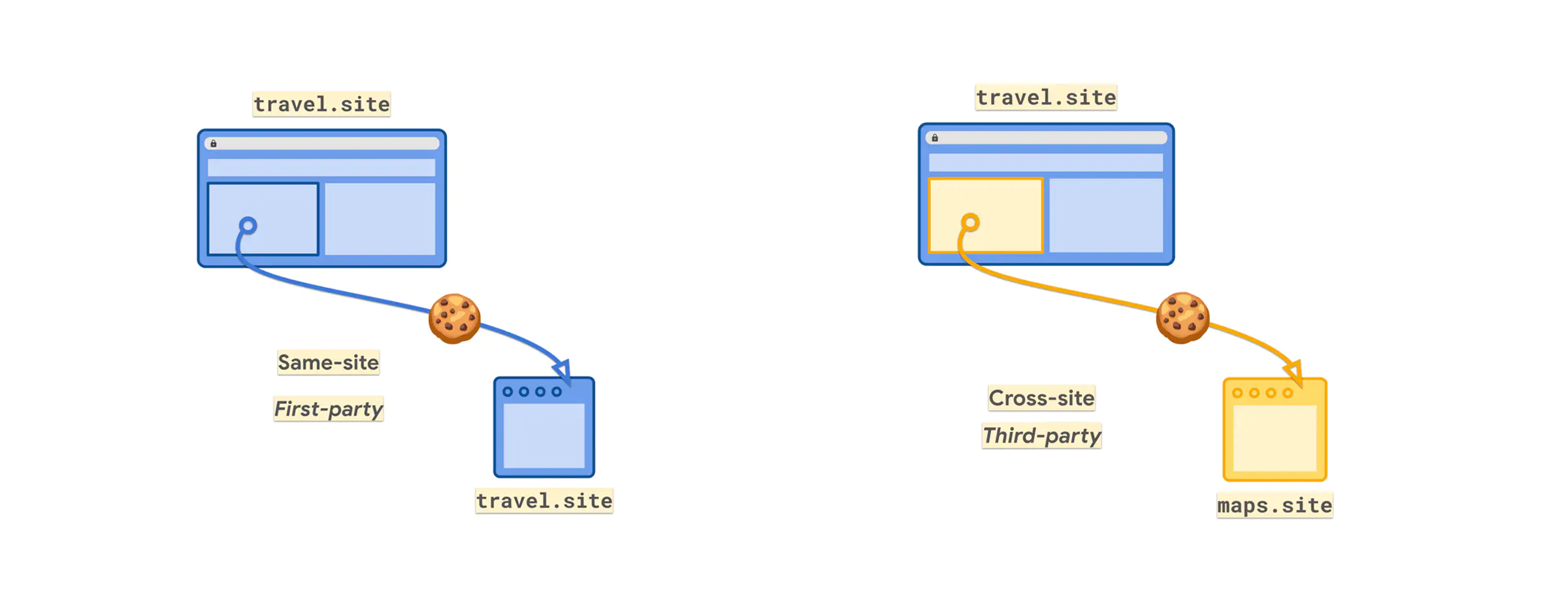Direct Mail Marketing in a Cookieless World
Posted in Direct Mail on January 6, 2024 by Ramin Zamani ‐ 4 min read

On Thursday, January 4th, Google began testing “Tracking Protection,” a new feature that limits cross-site tracking by restricting website access to third-party cookies by default.
They rolled this out to 1% of Chrome users globally and will eventually phase out third-party cookies for everyone in the second half of 2024.

Google's timeline on blocking third-party cookies in Chrome. Image source: Google
How does it impact printers and direct mail marketers?
To better understand the impact, let’s first review what’s actually happening.
What is the difference between first-party and third-party cookies?
First-party cookies and third-party cookies refer to different types of cookies used in web browsing.

The difference between first-party and third-party cookies. Image source: Google
First-party cookies are set by the website you are visiting directly. They are used to store information such as your preferences or login status on that particular website. First-party cookies are considered more secure because they are created by the website you trust.
On the other hand, third-party cookies are set by domains other than the one you are visiting. These cookies are often used for tracking and advertising purposes. For example, if a website includes ads from a third-party ad network, that ad network may use third-party cookies to track your online behavior across different websites to deliver targeted ads.
In recent years, there has been increased concern about privacy issues related to third-party cookies, leading to changes in browser policies and discussions about their potential impact on user privacy.
What happens when the third-party cookies are disabled?
When third-party cookies are disabled, it can have several implications for your online browsing experience:
Reduced Tracking: Disabling third-party cookies makes tracking your online behavior across different websites more challenging for advertisers and analytics services. This can lead to a reduction in the personalized ads you see.
Enhanced Privacy: Blocking third-party cookies enhances your privacy by preventing external entities from collecting and analyzing your browsing habits. This can be particularly important for those concerned about online privacy.
Limited Cross-Site Functionality: Some websites use third-party cookies for functionalities like embedded social media widgets or comment sections. Disabling these cookies might affect the smooth functioning of such features on certain websites.
Impact on Analytics: Website owners and marketers often use third-party cookies for analytics to understand user behavior and improve their sites. Disabling these cookies may limit the accuracy of website analytics.
Login and Session Management: While first-party cookies are usually sufficient for managing logins and sessions on a specific website, some websites may use third-party cookies for additional authentication or session management purposes. Disabling third-party cookies might impact such functionalities on certain sites.
Now that Chrome is moving toward increased privacy measures and is planning to block third-party cookies by default, alternative technologies, such as browser fingerprinting, are being explored, raising ongoing discussions about the balance between privacy and functionality on the web.
How does blocking third-party cookies impact direct mail marketers?
Blocking third-party cookies primarily affects online tracking and targeting capabilities, so it doesn’t directly impact traditional direct mail marketing, which is offline. Direct mail marketers rely on physical addresses and postal services rather than online tracking mechanisms.
However, there can be indirect effects on overall marketing strategies.
As online advertising becomes more challenging with the blocking of third-party cookies, businesses may shift their focus and invest more in alternative marketing channels, including direct mail. This could lead to a resurgence in the importance of direct mail as a targeted and tangible means of reaching potential customers.
In a broader sense, the changes in online tracking might prompt marketers to diversify their strategies and explore a mix of both online and offline channels to engage with their target audience effectively. With its potential for personalization and tangible impact, direct mail may become a more attractive option for businesses looking to connect with consumers without certain online tracking capabilities.
Are you part of the 1% chosen for testing Tracking Protection?
If you are randomly chosen as part of the participants, you’ll get notified when you open Chrome on either a desktop or Android.

Source: Google
How to enable third-party cookies?
If your website doesn’t work without third-party cookies, you may get a prompt with an option to temporarily re-enable third-party cookies for your website from the eye icon on the right side of your address bar.

Source: Google
How to prepare your own website for a (near) future without third-party cookies?
Blocking third-party cookies may impact your own website. Remember, third-party cookies aren’t necessarily set by a different company. For example, if you are hosting images on your website from a server with a different domain name that sets a cookie on your website, that is also considered a “cross-site” cookie which is basically treated as a third-party cookie.
To ensure your website functions properly without third-party cookies, start by auditing your cookie usage.
Here’s a helpful video from Google explaining the technical details:
Found this post helpful?
Subscribe to my newsletter and get posts like this in your inbox.
Found this post helpful?
Subscribe to my newsletter and get posts like this in your inbox.


